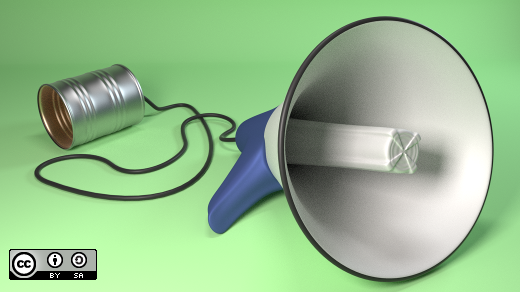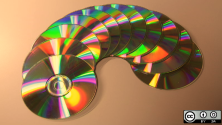I was fortunate to receive a new phono cartridge for Christmas. What a lovely present! And of course, there is great pleasure (or, I suppose, great frustration, depending on one’s point of view) in all the tinkering required to remove the old phono cartridge, mount the new one, and correctly set things up.
For some expert advice on this matter, I turned to the excellent instructional videos and articles by Michael Fremer, a vinyl enthusiast and audio journalist with many years of experience in all things phono. Rather than offer a single representative link here, I recommend searching for “Michael Fremer cartridge setup video” in your favorite search engine.
The problem
One of the issues I needed to confront with my new cartridge was its output level. My phono preamplifier is designed to work with the average moving magnet phono cartridge. Such a cartridge delivers a nominal output of around 5 millivolts, or mV (a millivolt is one-thousandth of a volt). The phono preamplifier must amplify this 5-mV input to around 1 volt, or V, of output to be compatible with the output produced by a CD player or DAC. This means that the amplifier must multiply its input signals by a factor of 200 or so. This multiplication is referred to as the amplifier’s gain factor. Electronic design tradition tends to refer to gain (or its opposite, loss) in terms of decibels, or dB, which is calculated from the gain factor as:

Let’s use the Linux utility bc to do this calculation. First, note that the above formula requires the base-10 logarithm and bc gives us the natural, or base-e, logarithm, so we need to adjust the scale factor to 20 to take that into account. Here’s what it looks like in my terminal window, using 1 as output voltage and 0.005, or 5 millivolts, as input voltage:
me@mycomputer:~$ bc -l
bc 1.06.95
Copyright 1991-1994, 1997, 1998, 2000, 2004, 2006 Free Software Foundation, Inc.
This is free software with ABSOLUTELY NO WARRANTY.
For details type `warranty'.
20 * l(1 / 0.005) / l(10)
46.02059991327962390440
me@mycomputer:~$The logarithm function is pre-defined in bc when the -l option is provided and is referred to as l(). The scaling is adjusted by dividing by the natural logarithm of 10, or l(10).
So my phono preamplifier offers a gain of about 46dB. This is a pretty standard sort of gain for moving magnet phono preamplifiers.
My new cartridge, however, is a moving coil phono cartridge, which has a much lower nominal output—rather than 5 mV, its output is 0.4 mV. Using the same formula in bc, we can calculate the sort of gain we need:
me@mycomputer:~$ bc -l
bc 1.06.95
Copyright 1991-1994, 1997, 1998, 2000, 2004, 2006 Free Software Foundation, Inc.
This is free software with ABSOLUTELY NO WARRANTY.
For details type `warranty'.
20 * l(1 / 0.0004) / l(10)
67.95880017344075219162
me@mycomputer:~$Apparently, then, I need a phono preamplifier with about 68dB of gain. What to do?
Potential solutions
There are basically two possible solutions to this problem (assuming I don’t want to trade in my Christmas present). The first is to acquire an alternative phono preamplifier that has the appropriate gain for this cartridge. The second is to acquire an additional gain stage that goes between the cartridge and the phono preamplifier that steps up the 0.4 mV to something like 5 mV.
In my case, I have decided to pursue—for the time being, anyway—the second option. But while coming to this decision, I encountered a number of designs for hobbyists interested in constructing their own phono preamplifiers as well as standalone extra gain stages for moving coil cartridges, which are variously called step-up devices, head amplifiers, or phono pre-preamplifiers.
Many of these designs are offered as some type of open source, whether formally through a license or informally in the public domain. Some designers offer bills-of-materials (BOMs) for electronics supply houses or kits to various levels. Let’s look at a few.
Step-up devices
One way to convert the low output of a moving coil cartridge to match the input of a moving magnet phono preamplifier is by using a transformer. A transformer is a very simple passive device that uses electrical induction to transfer electrical energy between one circuit and another, meanwhile changing the characteristics of the transferred energy in some desirable way.
Transformers are applicable to this step-up function because a moving coil cartridge creates the same total amount of electrical energy, more or less, as a moving magnet cartridge; even though it outputs only 1/10th the amount of voltage, it produces a much higher current than does the moving magnet cartridge. So a suitable transformer converts that total energy into a different proportion of voltage and current more suitable to the moving magnet phono preamplifier.
There are a few specialist transformer manufacturers that make devices suitable for this purpose; for example, Jensen, Lundahl, Stevens & Billington, and CineMag. You can find do-it-yourself instructions online by searching for “moving coil step up diy.” K & K Audio makes kits, using Lundahl transformers, for those willing and able to handle the soldering and assembly, and it also sells those kits in finished form. Bob's Devices sells packaged solutions based on the CineMag line of transformers. And a number of manufacturers incorporate transformers from these (or other) companies in their phono preamplifiers (especially tube-based circuits). Transformer step up devices and parts, both new and used, can be found on the usual online merchants. Finally, of course, there are other transformer and step-up manufacturers out there; your search engine is your friend...
Transformers are expensive, though. Producing a good one requires expensive machinery (relative to the low volume of output), a fair bit of specialized know-how, and relatively expensive core material. A good transformer requires precision manufacturing.
An alternative, with potentially lower cost, uses active devices—transistors, operational amplifiers, maybe even vacuum tubes.
For those willing and able to design their own circuit boards, there are many circuit schematics out there to choose from. Three of these come from the creative mind of Marshal Leach, a former professor of electrical engineering at Georgia Institute of Technology. Another interesting pair of designs are described on the Elliot Sound Products site; still more on the Tube CAD Journal, and on and on. Again, your search engine is your friend. One thing that I’ve found with circuit designs online: They usually get me only partway to the end goal, having been designed around the specifications of some cartridge that is quite different from mine. So be prepared to model and experiment to get the right results.
There are some nice kits available, with or without parts, for example, from Boozhound Labs or Muffsy Phono Kits (this site offers fine illustrated instructions for the novice builder). Both of these kit providers have solid after-sales support reputations.
Phono preamplifiers
What if you don’t have a phono preamplifier and would like to build one?
There are a lot of options out there, from circuit designs through partial kits with or without BOMs, to full kits. These options cover the range from using integrated circuit operational amplifiers through discrete transistors to vacuum tubes. I can’t begin to cover them all in this space, except to point out that “phono preamplifier designs” and “phono preamplifier kits” typed into your favorite search engine will turn up more options than one could ever need.
Of the sources described above, several, including K & K Audio, Boozhound, and Muffsy offer nice-looking kits.
Back in 2014, I bought a pair of bare boards from audio designer George Ntanavaras, based on an article he published in the March 2014 issue of AudioXpress magazine. I am somewhat ashamed to say that I haven’t done anything with these lovely boards; now that I have a phono cartridge suitable for using with them, maybe I should!
Closing thoughts
For those interested in building audio stuff in general, I cannot recommend the DIY Audio Projects site highly enough. Lots of designs, lots of interesting conversations, lots of experienced builders willing to help. Also, for someone thinking about building kit XYZ, there are often discussions of the merits (or otherwise) of that kit on the site.
Two more great resources are Pete Millett’s site, where Mr. Millett also sells kits and provides BOMs; and Linear Audio, which is well-organized and informative.







4 Comments